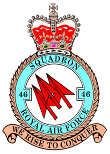|
Translation of Report
a) 24 March 1945
b) RAF Bomber Route: Libya – England
c) Short Stirling Mark V, PJ 911, No 46 Squadron, RAF, based at Stoney Cross.
d) Pilot: Pilot Officer McMillan was one of three pilots. There were three pilots on board, plus six crew members, i.e. nine airmen.
e) The aeroplane was undertaking a training flight from Castel Benito in Libya to Stoney Cross in Hampshire in southern England in loose formation with three other Stirlings, when it crashed into a mountain, while flying below the safety altitude recommended to the crews at the briefing. On 24 March 1945, the visibility was very poor on the Massif XXX. The aircraft was reported missing when they realised that it had not arrived at the Stoney Cross aerodrome. Initially, they thought that it had crashed into the sea, and with good reason … As we will see, the aeroplane had struck the foothills of XXX at 2456 metres in the department of Pyrénées-Orientales. The story that follows has been pieced together thanks to the kindness of two witnesses still living, Mr René Pideil, 84, former mayor of XXX from 1947 to 1977, and Mr Paul Calvet, 69, a former forest warden, who were the first to reach the wreck of the British aeroplane. Mr Calvet knew the site of the crash very well, having gone there many times, including recently. In 1945, the witness was 21 years old and therefore perfectly able to make a trek of this sort. He was pressed into service by the then mayor, Mr Joseph Girat, now dead, together with a number of inhabitants of the village, to form the first reconnaissance team and to bring back the bodies of the victims, or what remained of them. From the village of XXX, it is three hours on foot to the wreck of the aeroplane (according to Mr Calvet, parts of a motor can be seen even today). The salvage team found nothing but remains. Two bodies were found largely intact close to their seats and seemed to have been ejected on impact. The remains of the other unfortunate airmen were scattered over several hundred metres. The aeroplane clipped the mountain with its right wing (the wing was ripped off by the force of the impact and stayed where it was). At the same time, two of the crew members, probably the pilot and co-pilot were ejected with their seats. A few metres away, the salvage team found the remains of two other bodies, as well as a letter, written in English, in the inside pocket of a leather jacket. The rest of the aircraft had slid 200 metres below. The letter had been written by a Canadian woman, the fiancée of one of the airmen (two of whom were Canadian). Hence the confusion of the inhabitants of XXX about the origin of the crew; they thought the plane was Canadian. Down below there was nothing but remains and debris from the aircraft. This place was christened “The Basin of the Aeroplane” by the salvage team, who buried the remains of the victims there temporarily. It was not until the end of September 1945 that the remains were brought down by donkey and buried in the cemetery at XXX. A couple of years later, in 1947, British officers came to recover the bodies. Nine coffins were prepared. The witnesses did not know where they were transported. The aircraft entered the Pyrénées-Orientales from Spain through a corridor between the small spa town of La Prest (1019m) and the “Pic de Costabona” (2465m). It flew over “Las Esquerdes de Rotja” (Red Esquerdes) at the level of “Mort de l’Escoula”, before crashing, because it was flying too low and too far to the right owing to the fog, into the foothills of XXX (2456m) at a place called “Pla de Magre”, where the salvage team from XXX found it in June 1945, i.e. three months after the crash. (Site of the accident: 2400m. Village of XXX, 974m, 98 inhabitants).
What happened?
Close to two months after the crash, a Catalan cowherd, drawn by a foul smell, made a strange discovery and informed the mayor of XXX. He had found a rotting human foot, at a place called the “Ravin de Nouvaillet” around two kilometres from the accident, no doubt dragged there by foxes. The police in XXX opened an enquiry into this macabre discovery but found nothing. Theories were put forward that it was an escapee from France or somebody in hiding killed by a German patrol before August 1944. But shepherds and cowherds are great philosophers who have all the time in the world to meditate on the heavens and the earth and in particular, on the grandiose landscapes around them on the Massif XXX: with one eye on the flock and the other on philosophising … “This foot had a leg; this leg had a body; this body had a soul which hovers over me, crying ‘Help!’. To find the pieces of the puzzle, the snow must melt first.” |





